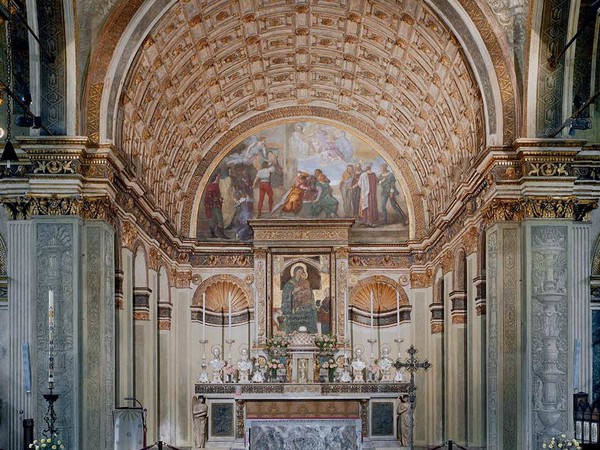Donato, nicknamed Bramante, was born near Urbino in the society of the XV-XVI century. Initially he worked in Milan as an architect and painter, but it was in Rome that he made his greatest architectural feats. The Christ of the Column is one of his works that represents Jesus at the moment of the flagellation. This painting has an extremely realistic representation, shadows and light create anatomical modeling, which gives the figure a statuary body. Jesus in the painting is represented tied by his arms and a rope around his neck, with a gray stone pillar, decorated with golden plant motifs.
He also worked on the Milanese church of Santa Maria presso San Satiro, which because of the lack of space, had to create a fake choir, in order to rationalize the entire structure, as from visual support to the balance of the dome. This realization created spatial dilation and was used perspective illusion. The effects of gold, blue friezes and ornaments give a greater reality to fiction, in fact Bramante in this period of his life still interpreted the architecture with the eyes of the painter.
Thanks to his studies the architect was directed towards powerful and classical architectural forms. As we can see from the Tribune of the church of Santa Maria della Grazie, outside thanks to the decoration and colors we have a geometric sharpness. This work suggests a new conception of interior spaces and their visual perception.
The architecture of Bramante was measured with that of imperial Rome thanks to its new style, the result of which was the Temple of San Pietro in Montòrio. It is very small in size and is a strong reference to classicism, following the shape of the ancient circular perimetre temples. Andrea Palladino in his Quattro libri dell’architettura said that Bramante was the first to highlight the beautiful architecture used by the ancients, now hidden. He also laid the foundations for the construction of the new Basilica of Saint Peter, as Pope Julius II decided to demolish the Constantinian building. From the autograph drawings we deduce that he designed a longitudinal building. Moreover, only a part of the new basilica is shown in the plans, so the idea arose that the missing part was identical to the one that survived, because Donato used the foundations already built.
Asia Isawi 4N
